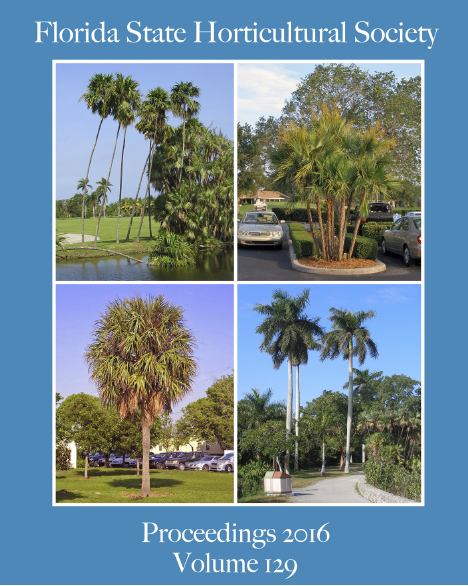Preemergence Herbicides for Purple Nutsedge (Cyperus rotundus L ) Control in Strawberry (Fragaria xananessa Duchesne)
Abstract
There are limited weed management options for nutsedge control in Florida strawberry production and there are no herbicides registered for use with activity on nutsedge. Experiments were conducted during the 2015–16 season at the University of Florida IFAS Gulf Coast Research and Education Center to evaluate EPTC, fomesafen, and S-metolachlor applied under the plastic mulch for use in strawberry. The first experiment was a dose-response trial set up as a randomized complete block design with four blocks that evaluated crop tolerance to 0, 0.53, 1.07, 2.13, 4.27, and 8.53 kg·ha-1 a.i. of S-metolachlor, 0, 1.47, 2.94, 5.88, 11.76, and 23.52 kg·ha-1 a.i. of EPTC and 0.21, 0.42, 0.84, 1.68, and 3.36 kg·ha-1 a.i. of fomesafen. The second experiment examined potential tank-mixes and was set up as a 4 x 3 factorial. The first factor was 1.47 or 2.94 kg·ha-1 a.i. of EPTC or 0.21 or 0.42 kg·ha-1 a.i. of fomesafen. The second factor was 0, 1.07 or 1.42 kg·ha-1 a.i. of S-metolachlor. In the dose-response trial, none of the treatments affected strawberry height, biomass, or yield. There was some visible stunting where S-metolachlor was applied, especially at the highest rate. There was no significant difference in nutsedge density in any of the treatments. In the tank-mix trial, none of the herbicides damaged or stunted the crop or reduced yield. We conclude that EPTC, fomesafen, and S-metolachlor are safe for use on strawberry when applied under the plastic prior to transplant. Further research is needed to identify susceptible weed species.

